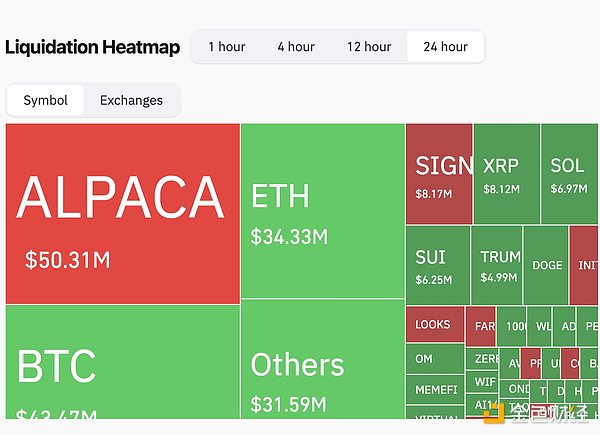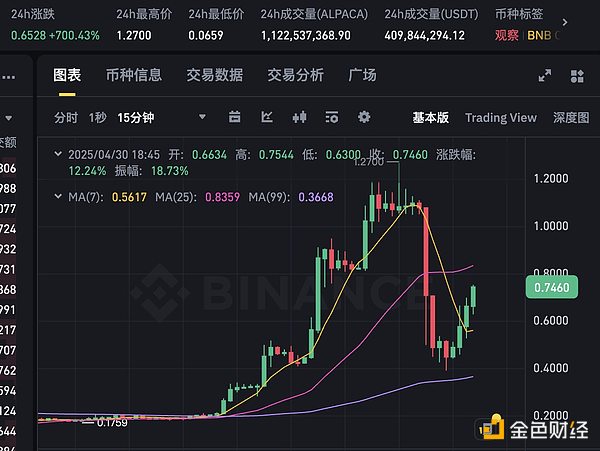Jessy, Golden Finance
According to common sense, it is a big bad news for a token to be delisted by an exchange.
However, this rule was not perfectly replicated in the ALPACA token that will be delisted from Binance on May 2. At first, when the news of ALPACA's delisting came on April 24, it also performed a short decline, but its price rose more than ten times in the next three days.
And by April 30, the highest price had risen by nearly 50 times from the time of the announcement of delisting. According to Coinglass data, in the past 24 hours, the amount of ALPACA tokens liquidated reached 50 million US dollars, exceeding Bitcoin.

Behind this absurd phenomenon is nothing more than a perfect harvest of ALPACA dealers.
The dealer's manipulation that violates common sense, the tragedy of retail investors
On April 24, about five days before Binance announced the delisting of ALPACA, the trading volume of ALPACA tokens suddenly increased, and the price almost doubled at its highest. At this point, it can be inferred that the dealer was absorbing funds at a low level before the delisting news was released.
When the news of the delisting was officially released on April 24, retail investors expected the price to plummet. At that time, the long-short ratio reached 1:4, but the price of the token did not fall all the way as expected by retail investors. Instead, it started to climb after a short drop of 30%.
The exchange also played an important role in this. Binance shortened the settlement cycle of the contract funding rate from 8 hours to 1 hour. When the rate fell to -2%, it also meant that the airdrop needed to pay a high rate to short, and the high rate also caused the shorts to close their positions, and the price of the token also rose accordingly.
However, the change in the rate did not work all the time on the rise and fall of the price of the token on ALPACA.
ALPACA is always counterintuitive, and it is precisely because of this counterintuitiveness that many traders make mistakes when trading according to the "rule", such as on April 29, Binance raised the upper limit of the ALPACA contract rate to ±4%. The increase in the upper limit of the fee rate and the increase in the short-selling fee rate would have discouraged short sellers, and the price of the token should have risen, but its price did not rise as it did on April 24. Instead, it fell, directly falling by 3/4.

And by April 30, this game of long and short being strangled by the dealer reached its peak, with the highest price within 24 hours being 20 times higher than the lowest price. At 5 pm on April 30, Binance delisted the ALPACA contract, and ALPACA fell more than 60% from its high point and then started to rise again.

In the past 24 hours, the largest ALPACA liquidation order on the entire network occurred on Bybit, which was 3.98 million US dollars. ALPACA's contract liquidation volume also topped the list.
Summary:
The most interesting thing about this incident is that the coordination between the banker and the news is too perfect, which makes retail investors confused. And the exchange itself has more or less become an accomplice in fueling the flames.
For example, Binance’s adjustment of the contract fee rate seemed to be originally intended to maintain market stability, but this time it was taken advantage of by the manipulators. For example, on April 29, Binance raised the ALPACA fee rate to ±4%, which was originally intended to dissuade short sellers, but the price fell instead and the position increased in the opposite direction.
The market makers undoubtedly took advantage of this news and caught retail investors off guard. This also shows that the formulation and adjustment of the rules of the exchange need to be more cautious, and all possible situations must be fully considered to avoid giving market manipulators an opportunity to take advantage of it.
This incident also exposed that retail investors are nothing more than toys in the hands of the market makers that can be harvested at any time. If they want to dance with the market makers, they will be on the edge of a knife.
 Alex
Alex








